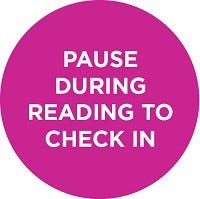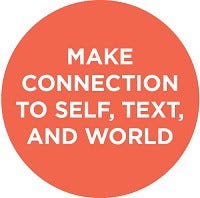Breakthroughs: Making Connections through Power-Packed Read Alouds
Use read-alouds to scaffold students’ foundational knowledge, make connections, and build new knowledge in classrooms or in distance learning

Philimena Owona is a 20-year educator who teaches English language arts in Prince George’s County. She is a graduate of Howard University and George Washington University.
An effective read-aloud is captivating. It creates a vivid world that churns with questions that spark connections to new knowledge, skills, and concepts. Here’s a detailed method that includes the incorporation of many literary skills and comprehension strategies to create an engaging, power-packed read-aloud that’s perfect for distance learning or classroom lessons.
Select a book
Start with the front cover and direct students to the names of the author and illustrator. The reader may pause here to inquire what the students themselves may have written or illustrated. Did the students share their work with anyone? How was their work received? Move on to the title and pause to explore background knowledge. Ask, “What does the title make you think about?” or, “From reading the title, what do you think the story will be about?”
Talk about the title
Use the title to discuss the genre — is it poetry or prose? If it’s poetry, ask questions about rhyme, rhythm, stanzas, repetition, imagery, and any other poetic devices found in the text. If the text is prose, ask is it fiction or nonfiction?
What genre is it?
Depending on the genre, formulate questions to solicit elements of the particular genre of your book.
Move to the back cover.
Use the blurb to introduce synonyms for it, like summary or synopsis. That opens the door to domain-specific or tiered vocabulary. Throughout your read-aloud, pause to point out key vocabulary, synonyms, homonyms, antonyms, compound words, multiple-meaning words, and figurative language.

Continue to the spine and jacket of the book, not your spine nor your jacket, folks — the book’s!
You know what that means … introducing multiple-meaning words that deepen contextual knowledge and build comprehension. Delving even deeper, travel to the dedication. Encourage students to use riddles or math problems to create their own tribute. Jon Scieszka’s Math Curse is an amazing example of a captivating book jacket and a clever dedication.
Great readers reread the text
Read the book in segments — take two or three days or even longer. Allow students to predict what will happen in the selection before, during, and after. Remind them to make connections to the story throughout their day. This allows them to return to the text, review what happened thus far, and share their favorite moments. Reread as needed for comprehension and details and have the students generate questions, not merely answer questions.

Learning Styles
Everyone learns differently and read-alouds are a simply superb strategy to harness students’ multiple learning styles. Use read-alouds to teach students how to make text-to-self, text-to-text, and text-to-world connections. Pause and let the kinesthetic learner wiggle to a word or the auditory learner repeat something a character said. Pause and let the visual learner imagine illustrations. Tapping into students’ learning styles fosters a deeper understanding of levels of text complexities. Howard Gardner and his multiple intelligences knew what he was talking about — connections, connections, connections!
Make Connections
Use these text connections to introduce literary devices. Robert Munsch’s Love You Forever unfolds repetition, draws inferences, and uses foreshadowing. In a text-to-self connection, have students share similarities in their childhood and the main character’s. Mary Hoffman’s Boundless Grace presents a tantalizing taste of allusion in Grace’s many mentions of fairy tales. In a text-to-text connection, have students make evaluations with other texts or genres. Jacqueline Woodson’s The Other Side portrays symbolism, friendship, and social injustices. In a text-to-world connection, have students construct contexts to global applications. Using read-alouds to scaffold students’ foundational knowledge, make connections, and build new knowledge is an effective, multifaceted approach.

